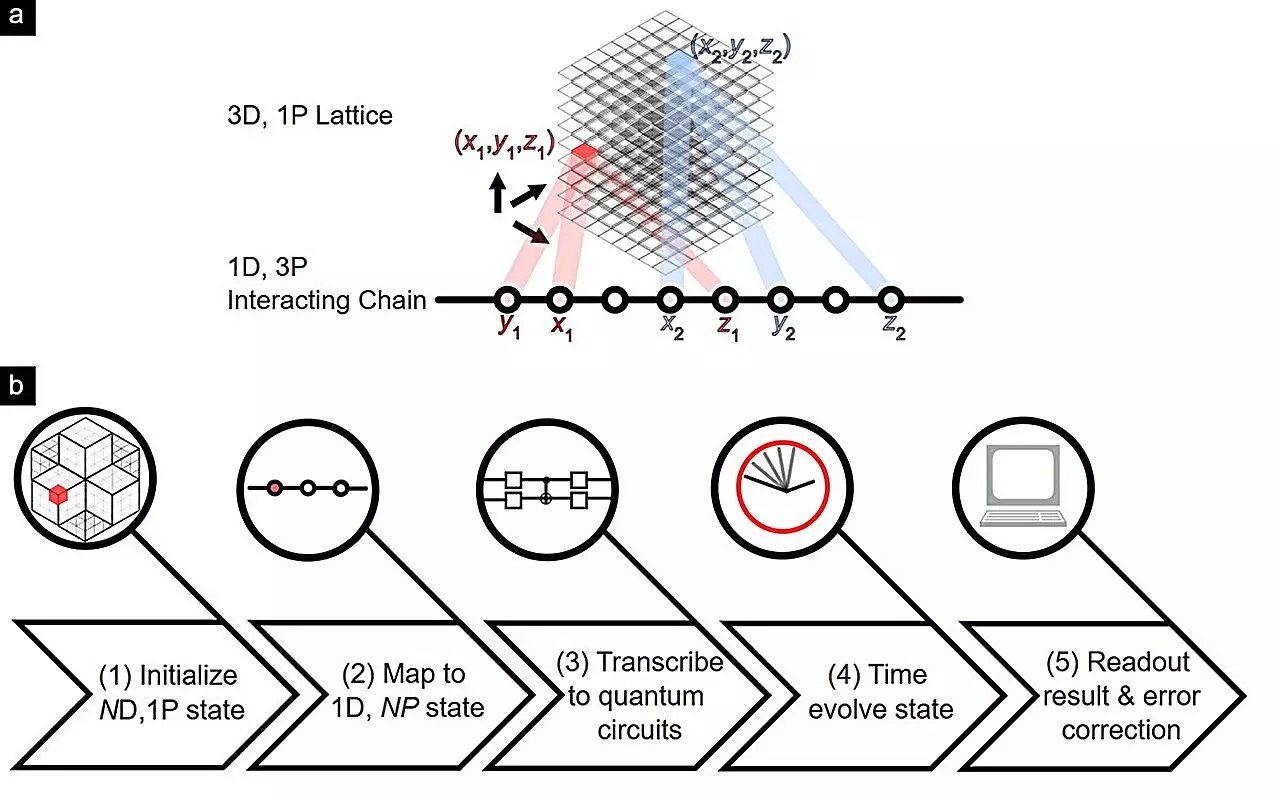Recent research conducted by the National University of Singapore (NUS) has paved the way for a deeper understanding of advanced quantum materials through the simulation of higher-order topological (HOT) lattices. These complex lattice structures possess robust quantum states that have vast implications for various technological applications. The study of topological states of matter, particularly their HOT counterparts, has garnered significant attention from physicists and engineers alike.
Led by NUS Assistant Professor Lee Ching Hua, a team of researchers has successfully developed a scalable approach to simulate large, high-dimensional HOT lattices using digital quantum computers. By leveraging many-body quantum interactions and encoding information into quantum computer qubits, the team has achieved unprecedented accuracy in the simulation of intricate topological materials. This breakthrough opens up new possibilities for the exploration of quantum advantage in material engineering.
Despite the limitations of current noisy intermediate-scale quantum (NISQ) devices, the research team at NUS has demonstrated the ability to measure topological state dynamics and protected mid-gap spectra of HOT lattices with remarkable precision. Through the use of advanced error mitigation techniques, they have showcased the potential of quantum technology in unlocking new frontiers in material engineering.
The findings from this research, recently published in the journal Nature Communications, highlight the immense potential of digital quantum computers in the simulation of advanced quantum materials. By simulating high-dimensional HOT lattices, researchers have laid the groundwork for exploring novel research directions in quantum materials and topological states. This not only signifies a significant step forward in quantum computing but also suggests a potential path towards achieving true quantum advantage in the future.
The simulation of higher-order topological lattices using digital quantum computers represents a groundbreaking advancement in the field of quantum technology. With the ability to explore the intricate signatures of topological materials with unprecedented accuracy, this research sets the stage for future innovations in material engineering and quantum computing. The potential applications of this research are vast and hold promise for revolutionizing the way we approach technological challenges in the years to come.


Leave a Reply
You must be logged in to post a comment.